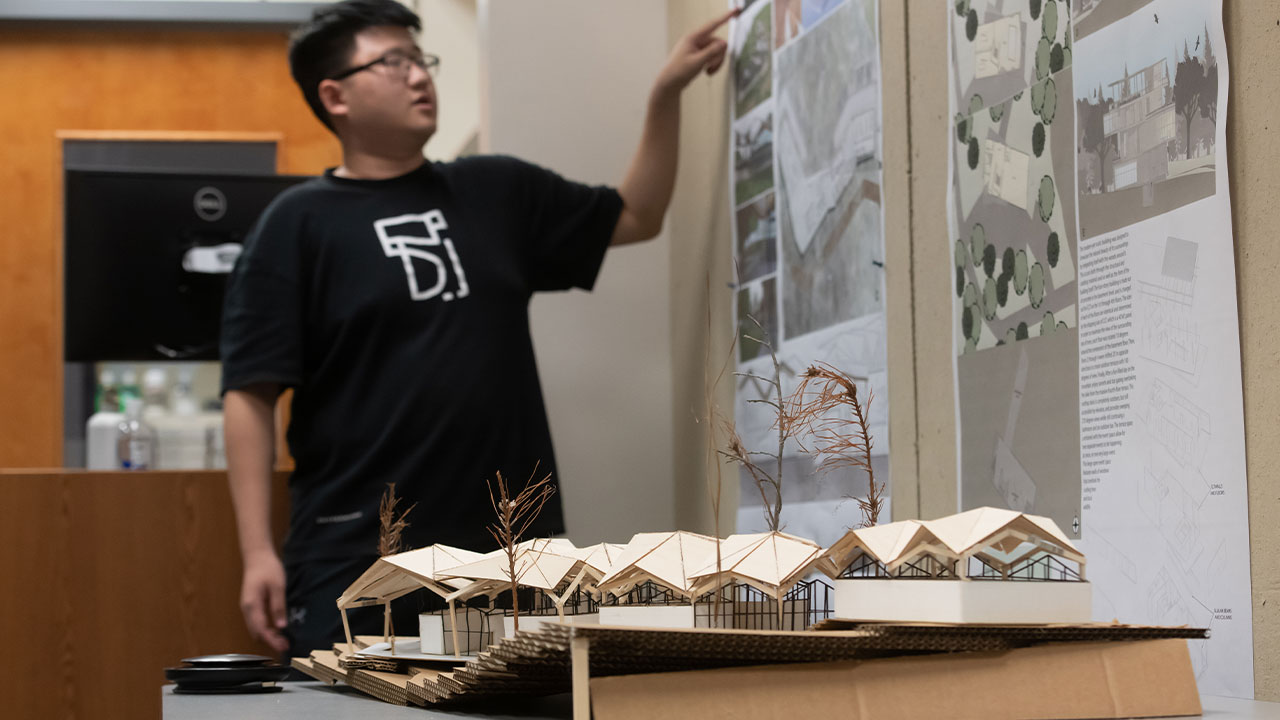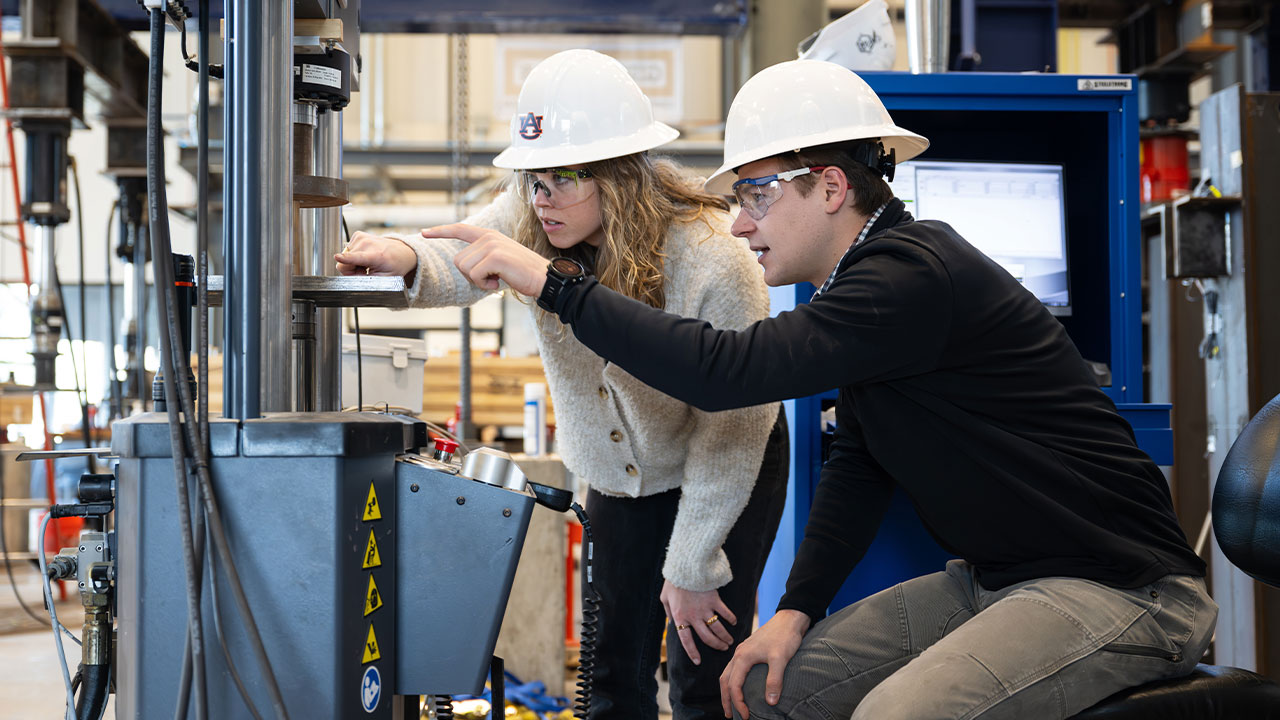content body

Students taking mass timber-focused courses explore the latest research into the benefits of mass timber design and construction.
Mass timber is a rapidly growing technology used in the design and construction fields, and the Auburn Mass Timber Collaborative (AMTC) is becoming a leader in mass timber research, teaching and outreach in the Southeast.
The AMTC is an interdisciplinary collaboration between colleges focusing on forestry, architecture, engineering and construction. Given that roughly 70% of Alabama is forested, and because forestry is one of the state’s largest industries, Auburn’s leadership in this area is vital.
“Mass timber building technologies represent some of the most promising solutions to the challenges associated with how we build in the 21st century,” said David Hinson, associate dean and the R. Hugh Daniel Professor in the College of Architecture, Design and Construction (CADC). “Helping advance and expand the use of mass timber wood building systems will translate to economic growth and jobs throughout Alabama and the region.”
Mass timber products, which include structural wall and floor panels, beams and columns, can be engineered to be as strong as concrete and steel while weighing less. Not only is mass timber a more environmentally friendly product, but it is also aesthetically pleasing and makes for faster, quieter and less wasteful construction.
The AMTC is comprised of faculty from across disciplines in CADC, the College of Forestry, Wildlife and Environment (CFWE) and the Samuel Ginn College of Engineering.
The colleges in the AMTC offer mass timber-focused coursework and design-build opportunities for undergraduates, with the goal of ensuring all students in related areas of study are introduced to mass timber. Graduate students have the opportunity to work with faculty to research mass timber production, performance, design and application, aiming to expand and accelerate the adoption of mass timber construction in the Southeast.
In terms of outreach, the AMTC plans to offer workshops, online learning resources and conferences, including the CFWE-led conference “The Sustainable Future of CLT in the South: Grow. Design. Build.,” with a focus on cross-laminated timber, taking place in Auburn, Oct. 7-9. Faculty and industry experts representing sectors along the cross-laminated timber (CLT) supply chain will share experience-based knowledge, perspective and innovations relevant to a diverse spectrum of attendees, including forest landowners, architects, engineers and construction management professionals.

Mass timber education and research occurs inside Auburn’s Advanced Structural Engineering Lab.
With some of the top research facilities in the region, Auburn is well-equipped to dive into this collaboration. Available resources include the Advanced Structural Engineering Laboratory, the Forest Products Development Center's wood science laboratory, the CADC Research Shop’s CLT press and fabrication equipment, the Robins & Morton Construction Field Lab and Rural Studio, a design-build studio in rural west Alabama that allows for full-scale prototyping and performance research.
“We’re getting the opportunity to test the limits of mass timber here in our Advanced Structural Engineering Laboratory for everything from designing blast-resistant structures for the Department of Defense to advancing hybrid steel-timber floor assemblies in low- and mid-rise structures,” said David Roueche, a Ginn Faculty Achievement Fellow and associate professor in civil engineering. “We are excited to be pushing the boundaries with this research, not only for the direct research benefits, but also for the talented students it attracts to our university and the opportunity to integrate it into our timber design courses.”
The AMTC features expertise spanning the full spectrum of the mass timber supply chain, including faculty members from various areas of study in forestry, architecture, landscape architecture, structural engineering and building science. As the team members gear up to expand research operations, they are currently applying for grants, collaborating with industry partners and reviewing campus projects that have the potential to utilize mass timber, similar to the newly constructed Environmental Education Building at CFWE’s Kreher Preserve and Nature Center.
“The abundance of forest resources and industry found within our region coupled with the faculty expertise at Auburn has created a powerful synergy to advance mass timber in the South,” said Brian Via, the Regions Bank Professor and director of CFWE’s Forest Products Development Center. “We start with forestry, where we provide expertise on wood as a material, followed by engineering, who ensures structural safety. Then, architecture and engineering help to make these structures more functional and appealing, and the end product is a mass timber material that opens up new pathways for nonresidential construction in Alabama and beyond.”




